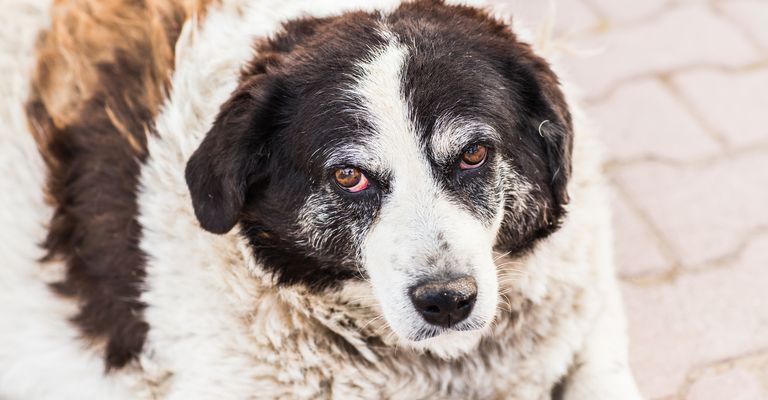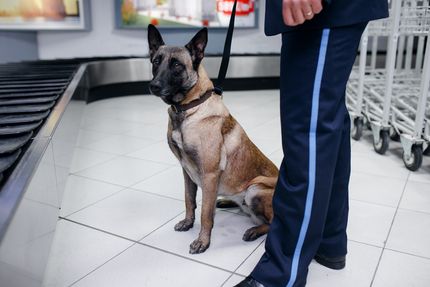If your dog has red eyes, this can have various causes, ranging from harmless irritation to serious health problems.
Here are some possible causes of red eyes in dogs and what you can do about it
Red eyes in dogs can often alarm owners and are a common reason for a visit to the vet. But before we get into more in-depth causes and solutions, it's important to understand what exactly "red eyes" means in this context. When we talk about red eyes, we're not referring to the actual color of the iris, which can vary from brown to blue to gray in dogs. Instead, we're talking about a visible redness in the eye, which can usually be seen on the white areas of the eye or on the edges of the eyelids. This redness is often a sign of irritation, inflammation or infection and may be accompanied by other symptoms such as swelling, discharge or obvious itching.
The eyes are a sensitive barometer of your dog's health and can indicate a variety of conditions. It is a misconception to think that slightly red eyes are always a minor problem. Sometimes they can be the first sign of a more serious condition. Therefore, it is important that dog owners learn to interpret the signs correctly and know when a visit to the vet is appropriate. In this blog post, we'll explore the possible causes of red eyes in dogs, how you can recognize them and when it's time to seek professional help.
- Allergies: Just like humans, dogs can react to pollen, mold, dust and other allergens with red eyes. Allergy-related eye irritation can usually be treated with antihistamines or eye drops prescribed by a vet.
- Conjunctivitis: This is an inflammation of the conjunctiva, the mucous membrane that covers the eyelid and part of the eyeball. Symptoms can include redness, swelling, discharge and itching. Conjunctivitis can be infectious or non-infectious and should be treated by a veterinarian.
- Foreign bodies in the eye: Sand, dirt or other small particles can get into your dog's eyes and cause irritation. If you suspect this is the case, you should take the dog to the vet to safely remove the foreign body.
- Dry eye (keratoconjunctivitis sicca): This condition occurs when not enough tear fluid is produced to keep the eye moist, causing irritation and redness. Dry eye can be chronic and often requires lifelong treatment.

- Injuries: Scratches or wounds to the eye or eyelid can cause redness. Such injuries should be examined immediately by a veterinarian to prevent infection and ensure proper healing.
- Glaucoma: Increased intraocular pressure can lead to glaucoma, a serious condition that can lead to blindness if left untreated. Glaucoma often causes red eyes and is a veterinary emergency.
- Uveitis: This is an inflammation of the middle layers of the eye and can cause redness, pain and sometimes a cloudy appearance of the eye. Uveitis can be caused by disease, infection or injury and should be treated immediately by a veterinarian.
If you notice that your dog's eyes are red, it is important that you have him examined by a vet to determine the cause and start the right treatment. In the meantime, it is advisable to keep the affected eye clean and free of irritants. Try to avoid rubbing or scratching your dog's eyes and keep the area around the eye clean.
What can you do acutely if your dog has a red eye due to an attack or scratch in the eye?
If your beloved four-legged friend has red eyes after an attack, you need to act quickly and carefully. First of all, it is important to remain calm yourself, as dogs react very sensitively to the emotional state of their owners. A calm demeanor can help your dog to become less agitated, which is an advantage when assessing and treating their injury. Look carefully at your dog's eyes to see if there are any signs of injury. If there is a foreign body in the eye that is easily accessible, gentle removal can be attempted. However, it is crucial that you do this with extreme caution and refrain from removal if there is any uncertainty or difficulty. Avoid giving your dog any medication without consulting a vet as this can make the situation worse.
Also, make sure your dog does not try to rub or scratch his eyes as this could cause additional damage. A protective collar can be helpful in preventing such actions. The next and probably most important step is to contact a vet or veterinary clinic immediately. Red eyes can be an indicator of serious injuries that need to be treated professionally to reduce the risk of complications. When taking your dog to the vet, ensure a safe and comfortable mode of transportation that avoids additional pressure on their eyes.
When caring for and protecting our faithful companion, it is crucial that we, as responsible pet owners, read the signs correctly and act accordingly. Red eyes in dogs after an attack require immediate veterinary evaluation to ensure your dog's well-being and maintain their health.
Remember that your dog's eye health is an important aspect of their overall well-being. Regular check-ups with the vet can help to identify and treat potential problems early on.




















